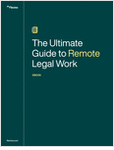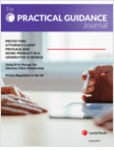Hand-held devices, smartphones, notebook computers and remote access to company computer systems are just a few of the ways that work extends beyond business premises. Old-school work-time rules and personnel policies no longer address risks associated with workers’ mobility. Below are some common employee behaviors for which in-house counsel must plan when drafting a remote-access policy.
“I’m just e-mailing something to a friend.” The information technology or human resources staff should educate employees about the confidential nature of the types of documents to which they typically have access and the damage inadvertent disclosure could cause the company. IT can password-protect computer source code and other trade secrets, make them available only to specified individuals and monitor network access. IT also can set up e-mail programs to require employee confirmation that they intend to disclose the document outside the company before they can send information. Do not allow employees to use personal equipment or systems to access or work on company data, due to the risk of inadvertent disclosure and difficulty in recovering this information after an employee leaves the company.




